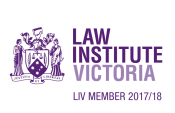You were so excited!
You were so looking forward to your Australian Visa grant, and your bright future in Australia!
You were convinced you met the criteria for the visa that you applied for. The whole world looked wonderful and optimistic, just like your plans to migrate to Australia.
It’s been ages since you applied.
You’re asking yourself, when will my visa grant come through?
You wonder, surely it won’t be long now?
Then you see it.
That email….
That email with the heading that says “Refusal of a (insert appropriate name) Visa”.
What?! My visa has been refused?
No way!!! This is not happening! After all the money I paid? After all my hard work preparing my visa application?
After I thought I knew what I was doing?
It’s an anonymous email from a nameless but apparently heartless decision-maker who has just ruined your life as you know it – all you have is a “Position number”. It dawns on you that you can’t call or email to complain.
Suddenly, you’re in a visa nightmare.
“B#st#rds!” you think.
You know how desperate I am to stay in Australia!
I am doing great things here, working, paying my taxes, contributing to Australia, making new friends….
Australia needs me!
That’s it, you think. My future in Australia is over. My life as I know it is ruined.
You need to think again…..
Get your optimism suit on….
Here are a few things you can do, and hopefully, still pave your way to a visa grant…
Step 1:
Can this decision be revoked (reversed) by the Department of Home Affairs (DHA)?
The Department of Home Affairs (DHA) may, on rare occasions (please accept it’s hardly ever) revoke a refusal decision if requested to do so.
There must be a significant error in the decision for it to reverse a visa refusal.
The DHA will only revoke a visa refusal decision if you can show:
that there is a clear legal error in the reasons for the decision, or,
if there has been a failure to provide “procedural fairness”.
What does that mean?
What is a Legal Error?
A legal error may occur when a case officer takes into account an irrelevant consideration, or fails to take into account a relevant consideration.
An example of a visa refusal decision we recently had revoked
Recently, we received a refusal decision from the DHA.
The application was refused because the case officer decided that licensing was required for the particular occupation – a Drainer.
As we had clearly established in many other cases that licensing was not required for Drainers, the DHA revoked the decision and granted the visa.
The case officer had made a legal error in her decision, because she took into account an irrelevant consideration – i.e. that our Drainer client needed a licence, when he didn’t (much to the relief of our very happy client).
Another revocation…
Another recent example was where a case officer had miscalculated the cost of medical care for one of our clients who is HIV+.
We applied for a two-year student visa for our client, but the DHA had costed out medical costs relevant to the visa for a total of four years.
The case officer refused the visa on the basis that our client did not meet the health requirement because he exceeded the costs threshold which is currently $49,000.
(HIV is currently costed out by the Dept at about $13,000 a year – see our recent blog about health requirements and health waivers here).
The DHA revoked the decision and granted the visa – the case officer had made an error by not taking a relevant consideration into account – i.e., that the visa was only for two years and not four, rendering the medical costs under the required threshold.
What is “failure to provide Procedural Fairness”?
A failure to provide procedural fairness can occur in many different ways.
An example would be where a case officer has given 28 days to respond to a request for further information – but refuses the visa application before the end of that 28 day period.
This would be a procedurally unfair decision, which also contains a legal error (because a case officer is bound by the Migration Act in most cases to give 28 days to respond to requests for further information made in writing).
Step 2:
Seek a review of the visa refusal at the Administrative Appeals Tribunal
Most refused visa applications can be appealed at the Migration Review Division of the Administrative Appeals Tribunal (AAT).
Visa application refused while you are outside Australia?
Some visa applications that are refused when the visa applicant is outside of Australia cannot be appealed at the AAT, unless the visa applicant has been sponsored, either by a family member, or business for example.
Strict timelines apply
No matter which division of the AAT is applicable to the Visa refusal, it is critical to keep in mind that there are strict timelines with respect to appealing a decision at the AAT.
Applications for review of a decision at the Migration Review Division of the AAT.
Where there has been a decision to refuse a visa that has been applied for in Australia (an onshore application), and can be reviewed at the AAT, a review application must be lodged at the AAT within 21 days.
Where a visa applicant is outside Australia but is sponsored by an Australian citizen, an Australian permanent resident, or an Australian Business, and a review application is permitted, the review application must be lodged within 70 days after the date of the decision.
When does the time start running?
The time starts running from the time and date you are “deemed” by law to have received the visa refusal decision.
• If you receive the decision by email, you are taken to have received the decision at the end of that day.
• If you receive the decision by post, you are taken to have received this decision seven days after the date on the refusal letter.
How do I lodge my AAT application?
You can lodge an application for review of an adverse visa decision using a paper application form, or via the AAT’s online application system.
We lodge all of our AAT review applications online. The online system is easily accessible, easy to manage and we can view our application documents at any time, as well as upload supporting evidence whenever it is convenient. Even after a document has been uploaded we can view and download our documents easily from the online portal. Further, any documents that are uploaded to the system are automatically acknowledged by way of an auto response email containing a list of all of the documents uploaded – which is fantastic for record keeping.
Advantages of lodging your AAT Application via AAT’s online portal.
Another advantage of the online system for lodging is that acknowledgment of an application for review is virtually instantaneous. Even better, the application can be lodged at any time of the day or night. Payment can also be made online at the time of application via credit card.
On the other hand, paper applications, even if emailed, may take days to be acknowledged by the Tribunal, and even though credit card payments are accepted, you may not find out that payment has “bounced” when the paper application was being processed. This can be especially critical if your timeline for lodging is particularly tight.
There have been a number of cases where a credit card payment has not worked for whatever reason, and applicants have been unable to lodge an application for review of the decision because they have missed the deadline for lodgement.
If you don’t lodge your application in time….
Where the deadline for lodging is not met, the AAT has no jurisdiction to hear the matter, and an appeal to the Federal Circuit Court (if available) would almost certainly fail.
Having said this, the court decided in a recent case, that the Department of Home Affairs’ letter was so incomprehensible with respect to the deadline for lodging the review application, it allowed a late lodgement because of it. We would not advise relying on this defence for late lodgement!
What evidence or documents should accompany an application?
Initially, the only documents that need to accompany a review application, are the application form, payment authorisation and the notice of refusal of the Visa application.
Help, I cannot afford the application fee!
The AAT rules allow an application to be lodged without a fee where the person lodging the application makes an application to have the fee reduced on the basis of financial hardship (the fee is currently just under $1,900).
In very rare circumstances, the Tribunal may reduce this fee by 50%, however, if the fee is not reduced by the AAT, the lodgement will only be a valid lodgement if the full fee is paid.
Do I get any money back if I win my case?
Provided you have paid the full fee at the time of application for the review, you will receive 50% of your fee back if you “win” your case.
If I win my case, will the Tribunal grant my Visa?
The Tribunal cannot grant you a Visa, but if it finds that the reason for refusal does not apply, it will remit the application back to the Department of Home Affairs for further processing, on the basis that the reason for refusal has been “overturned”.
What happens after an application for review is lodged?
The first thing is that the Tribunal acknowledges the application by email, and provides a receipt for payment.
After that, it, unfortunately, becomes a waiting game. Most applications for review currently take between 12 to 18 months to reach a hearing. Some Visa refusals, such as visitor Visa refusals, and student Visa refusals may reach a hearing somewhat quicker.
Can a matter be expedited by the AAT?
It is possible to ask for matter to be expedited (or sped up) however there must be exceptional circumstances before the Tribunal will agree to expedite a matter.
The Tribunal is likely to seek further information prior to a hearing.
Often, the Tribunal will seek further information prior to hearing, all further information can be provided to the Tribunal without it being requested.
Sometimes if an applicant is lucky, the Tribunal will decide the matter “on the papers”. This means that the Tribunal has satisfied itself that the evidence provided to it is sufficient for it to reach a different decision.
Unless instructed to do so by the applicant, the Tribunal will not affirm the Department of Home Affairs decision without calling the applicant in for a hearing.
Staying lawful
During the period prior to the hearing or resolution of the case, you will continue on the same Bridging Visa that was issued to you at the time you lodged your visa application – and it will have the same conditions with respect to work or study. If you have a Bridging Visa A, you will still be able to travel if you first apply for a Bridging Visa B.
Holders of Bridging Visa C’s and below cannot travel – and if you do leave Australia, you will have to apply for another visa to return to Australia.
If your application is affirmed at the Tribunal, you will have either 28 or 35 days to leave Australia, depending upon when you lodged your visa application. If your matter is remitted for further processing, you will continue on your existing Bridging Visa until your visa application is decided by the Department of Home Affairs.
What happens at a Tribunal hearing?
Generally, an applicant is notified there will be a hearing approximately 3 to 4 weeks before the hearing date.
The Tribunal sends out an invitation to the hearing, and a response is required within seven days. The response to the invitation hearing allows the applicant to list any witnesses that they would like to give evidence on their behalf, and puts the Tribunal on notice if an interpreter is required.
The Tribunal prefers evidence that the applicant intends to rely on to be provided to it within seven days of the hearing date, however, the Tribunal must accept all evidence provided to it up until the time it makes the decision.
At the hearing, the applicant and any witnesses must take an oath or affirmation that the evidence that they are providing is true. Once that happens the Tribunal Member (also called the Presiding Member), will explain the procedure he/she intends to follow, and the evidence that he intends to seek from the applicant and any witnesses that are present. Usually, witnesses will be sent out all the hearing room while the applicant gives their evidence. Once the main applicants evidence is provided in each subsequent witness will be brought in to the hearing room to give their evidence.
Witnesses may attend the hearing in person, or by video link or by telephone.
Decision time
Once the Member has satisfied themselves that all the evidence that is relevant has been taken, he/she will bring the hearing to an end, and either give an oral decision immediately (which is quite unusual) or provide a written decision in the days or weeks following the hearing’s conclusion.
Most of the time, the Tribunal’s decision will be delivered by email. It is therefore imperative to update your email address with Tribunal immediately there are any changes to it.
What happens if the Tribunal “overturns” the Visa refusal decision?
As discussed above, the Tribunal cannot grant your visa.
If the Tribunal finds that the reason your visa was refused no longer exists, it remits the application back to the Department of Home Affairs for further processing.
Please note that just because the Tribunal remits your application, it does not mean that the Department of Home Affairs will automatically grant your visa. The DHA must assess the application to ensure that it meets every other criterion for the visa grant, and it is possible that the DHA may refuse the application because of a different reason.
What happens if the Tribunal affirms the refusal decision of the Department of Home Affairs?
If the visa refusal decision is affirmed, it may be possible to appeal the decision by way of judicial review at the Federal Circuit Court. However to do this, the Tribunal decision must be seen to contain a legal error.
Have you had an Australian Visa application refused?
Not sure which way to go and whether it is worth seeking a review of the decision? Talk to us today or book yourself in for a consultation. We have extensive experience in AAT Reviews and Federal Circuit Court matters (to the extent that other law and migration firms refer their clients to us).
“Massive thank you to Maggie and the team.
I have had a long journey getting my residency with negligence from previous immigration agents which lead to tribunals and other difficulties. But thankfully my journey was made a lot more pleasant and shorter when the team at AHWC took over my case” | Kevin C

 Points Test
Points Test
 Book Now
Book Now 


